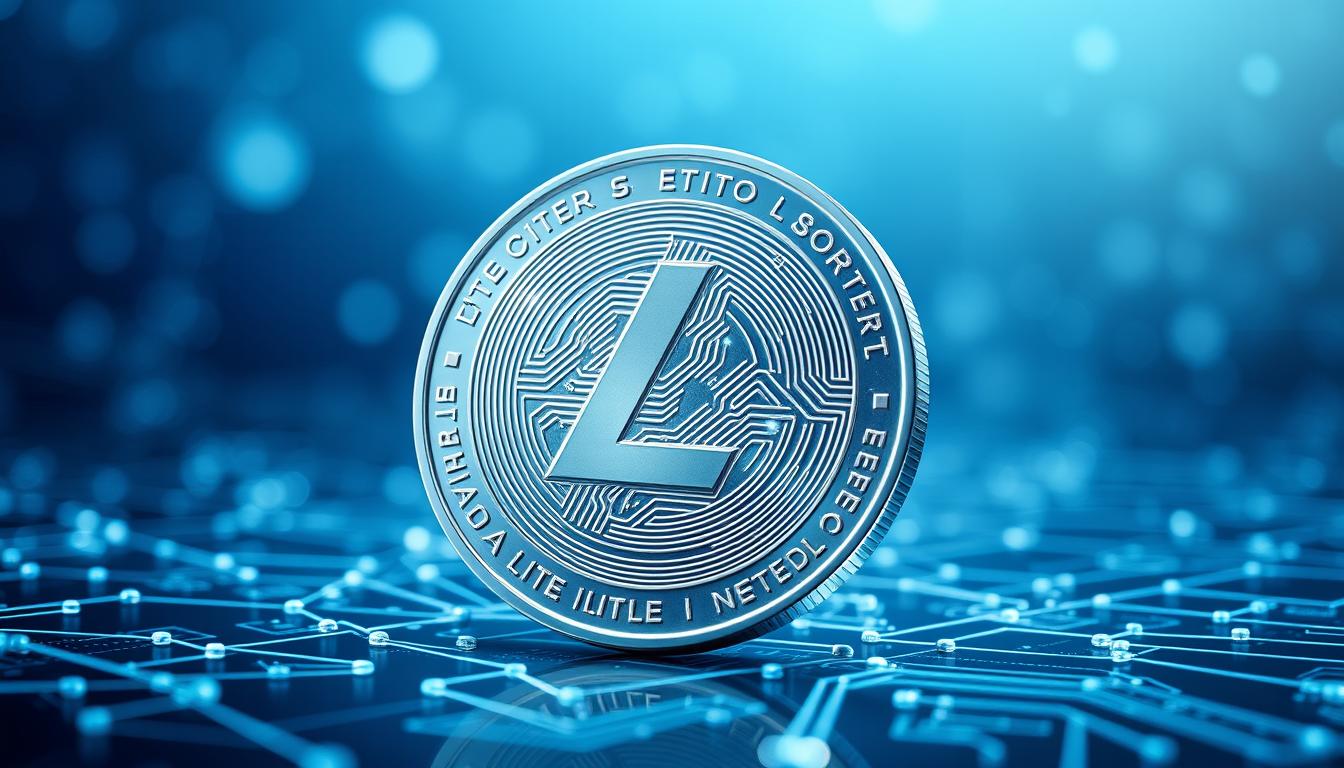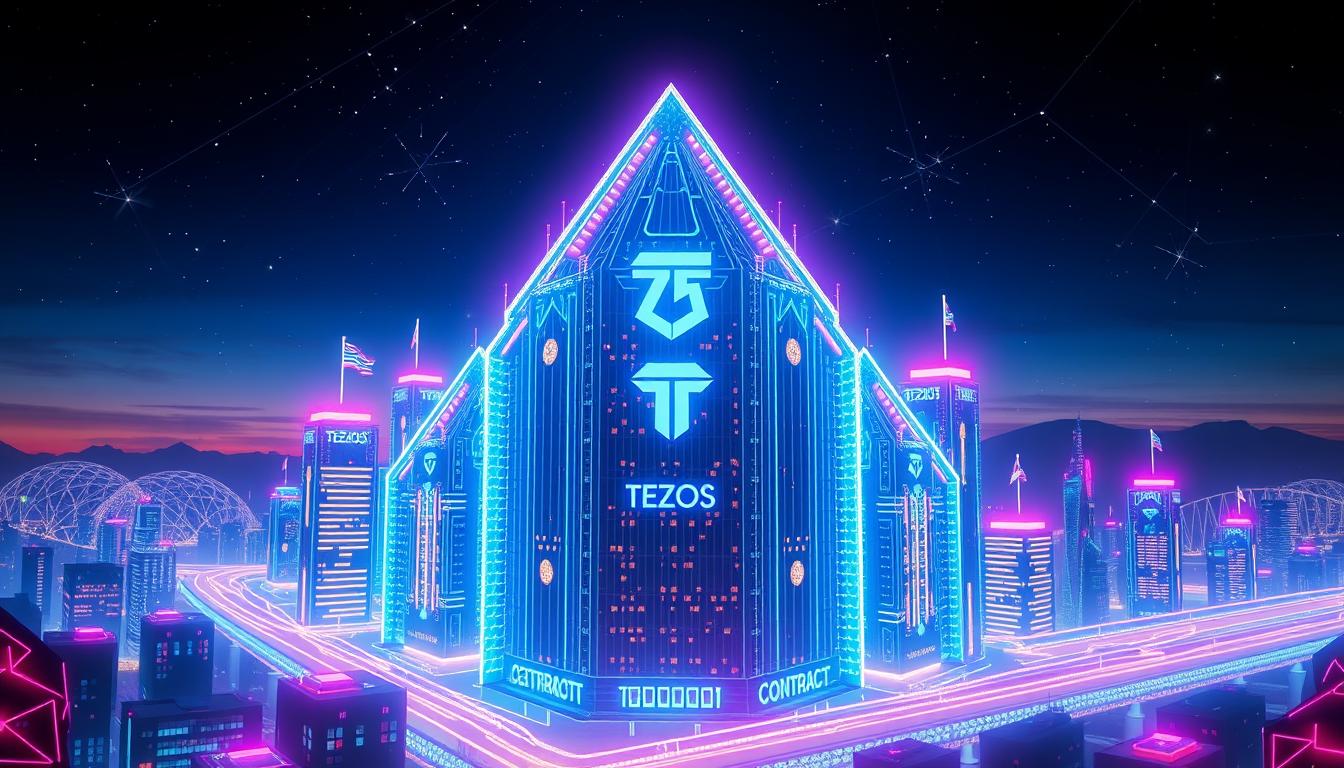Now Reading: Cosmos (ATOM): Revolutionizing Blockchain Ecosystems
- 01
Cosmos (ATOM): Revolutionizing Blockchain Ecosystems
Cosmos (ATOM): Revolutionizing Blockchain Ecosystems

In the dynamic and ever-evolving world of blockchain technology, Cosmos (ATOM) has emerged as a groundbreaking platform that is poised to reshape the landscape of decentralized ecosystems. As a leading cryptocurrency and a decentralized network of interconnected blockchains, Cosmos is revolutionizing the way we think about blockchain interoperability, scalability, and innovation.
At the heart of Cosmos lies a profound vision: to create a more connected, efficient, and user-friendly digital future. By leveraging its innovative architecture and cutting-edge features, Cosmos aims to address the pressing challenges faced by traditional blockchain networks, such as fragmentation, scalability limitations, and lack of cross-chain communication.
Through its unique approach to blockchain design, Cosmos empowers developers and users alike, offering a seamless and scalable ecosystem that transcends the boundaries of individual blockchain networks. With its proof-of-stake consensus mechanism, decentralized governance model, and advanced interoperability capabilities, Cosmos is poised to redefine the future of the blockchain industry.
Key Takeaways
- Cosmos (ATOM) is a decentralized network of interconnected blockchains that enables seamless interoperability and scalability.
- The platform’s innovative architecture, including Tendermint consensus and Inter-Blockchain Communication (IBC), facilitates efficient cross-chain transactions and data exchange.
- Cosmos is built on a proof-of-stake model, which promotes decentralization and governance by its community of validators.
- The Cosmos ecosystem is expanding rapidly, with a growing number of projects building on the platform to leverage its interoperability and developer-friendly features.
- Cosmos aims to address the fragmentation and scalability challenges faced by traditional blockchain networks, paving the way for a more connected and efficient digital future.
Introduction to Cosmos (ATOM)
Cosmos (ATOM) is a groundbreaking blockchain ecosystem that is revolutionizing the way we think about decentralized networks. At its core, Cosmos is a decentralized network of independent, parallel blockchains, each with its own unique features and capabilities. This innovative approach to blockchain technology aims to create an interconnected ecosystem where different blockchain networks can communicate and exchange data seamlessly.
What is Cosmos (ATOM)?
Cosmos (ATOM) is a decentralized network that enables the creation, operation, and scaling of blockchain applications. It is designed to solve the problem of blockchain interoperability, allowing different blockchain networks to communicate and exchange data with one another. The Cosmos ecosystem is built on the Tendermint consensus mechanism and utilizes the Inter-Blockchain Communication (IBC) protocol to facilitate this cross-chain interaction.
The Vision Behind Cosmos
The vision behind Cosmos is to create a decentralized network of blockchains, each with its own unique features and capabilities, that can seamlessly interact with one another. This interconnected ecosystem aims to unlock the full potential of blockchain technology by enabling the transfer of assets, data, and information between different blockchain networks. By fostering this interoperability, Cosmos hopes to drive the widespread adoption of blockchain technology and create a more connected and efficient decentralized ecosystem.
“Cosmos is building the internet of blockchains – a network of blockchain networks.” – Jae Kwon, Co-founder of Cosmos
The Architecture of Cosmos
Cosmos (ATOM), the innovative blockchain ecosystem, is built upon a robust and scalable architecture that enables seamless interoperability and efficient consensus. At the core of this architecture are two essential components: the Tendermint consensus mechanism and the Inter-Blockchain Communication (IBC) protocol.
Tendermint Consensus
The Tendermint consensus algorithm is a crucial part of the Cosmos (ATOM) ecosystem. It is a Byzantine fault-tolerant (BFT) consensus protocol that ensures the integrity and security of the network. Tendermint allows Cosmos (ATOM) to achieve high transaction throughput, low latency, and robust fault-tolerance, making it an ideal choice for building scalable blockchain applications.
Inter-Blockchain Communication (IBC)
The Inter-Blockchain Communication (IBC) protocol is a groundbreaking innovation that enables seamless interoperability between different blockchain networks within the Cosmos (ATOM) ecosystem. IBC allows Cosmos (ATOM) to connect with other blockchain systems, facilitating the exchange of data, assets, and messages across different chains. This interoperability feature is a key aspect of Cosmos (ATOM)’s vision, as it promotes the creation of a decentralized network of interconnected blockchains.
By leveraging the power of Tendermint consensus and the IBC protocol, Cosmos (ATOM) has built a robust and scalable architecture that empowers developers to create innovative blockchain applications with ease. This architecture is a testament to Cosmos (ATOM)’s commitment to driving the evolution of the decentralized ecosystem.
| Feature | Description |
|---|---|
| Tendermint Consensus | A Byzantine fault-tolerant consensus protocol that ensures the integrity and security of the Cosmos (ATOM) network. |
| Inter-Blockchain Communication (IBC) | A protocol that enables seamless interoperability between different blockchain networks within the Cosmos (ATOM) ecosystem. |
Cosmos (ATOM): A Proof-of-Stake Blockchain
The Cosmos (ATOM) blockchain has embraced the innovative proof-of-stake (PoS) consensus mechanism, setting it apart from the traditional proof-of-work (PoW) systems. This shift towards PoS offers numerous advantages that are revolutionizing the blockchain ecosystem.
Unlike PoW, which relies on energy-intensive mining, the PoS model in Cosmos (ATOM) empowers validators to secure the network. These validators, who hold ATOM tokens, are responsible for validating transactions and adding new blocks to the blockchain. This approach significantly reduces the energy consumption and environmental impact compared to PoW-based networks.
Another key benefit of the PoS model is its scalability. The Cosmos ecosystem can support a higher transaction throughput, allowing for faster and more efficient processing of data. This makes Cosmos (ATOM) an attractive choice for developers and users seeking a more scalable and sustainable blockchain solution.
Importantly, the PoS consensus in Cosmos (ATOM) also fosters a more decentralized network. By incentivizing a wider participation of validators, the ecosystem becomes less reliant on a few dominant players, promoting a more equitable and inclusive blockchain network.
“The proof-of-stake model in Cosmos (ATOM) is a game-changer, empowering a more sustainable and scalable blockchain ecosystem.”
As the Cosmos (ATOM) network continues to evolve, its adoption of the PoS consensus mechanism positions it as a leader in the blockchain industry, driving innovation and transformation in the way we think about and interact with distributed ledger technologies.
Decentralized Governance and Validators
At the heart of the Cosmos (ATOM) ecosystem lies its commitment to decentralized governance, where the power to shape the network’s future rests in the hands of its diverse community of validators. These validators play a crucial role in maintaining the integrity and security of the Cosmos blockchain.
The Role of Validators
Validators in the Cosmos (ATOM) network are responsible for validating transactions, adding new blocks to the blockchain, and participating in the decentralized governance process. These validators are selected based on their stake in the network, their technical competence, and their commitment to the Cosmos principles. By staking their ATOM tokens, validators demonstrate their skin in the game and their dedication to the ecosystem’s success.
Governance in the Cosmos Ecosystem
- The Cosmos (ATOM) network employs a decentralized governance model, where token holders can participate in shaping the network’s direction through voting and proposal-making.
- Validators play a crucial role in this process, as they act as stewards of the network, proposing and voting on upgrades, parameter changes, and other important decisions.
- This decentralized governance structure ensures that the Cosmos ecosystem remains responsive to the needs and aspirations of its community, fostering continuous innovation and adaptability.
By empowering its community of validators and maintaining a decentralized governance model, Cosmos (ATOM) aims to create a truly self-governing and resilient blockchain ecosystem that can adapt and thrive in an ever-evolving digital landscape.

Interoperability: Connecting Blockchains
At the heart of the Cosmos (ATOM) ecosystem lies a profound commitment to interoperability – the seamless integration and communication between diverse blockchain networks. This innovative approach sets Cosmos apart, positioning it as a trailblazer in the blockchain landscape.
The Cosmos network is designed to facilitate the exchange of value and data across multiple blockchains, empowering users to seamlessly navigate the decentralized digital landscape. Through its cutting-edge Inter-Blockchain Communication (IBC) protocol, Cosmos enables different blockchain ecosystems to interact with one another, breaking down the siloes that have long plagued the industry.
Interoperability is a game-changer for the blockchain space, allowing for the creation of a truly interconnected web of decentralized applications and services. By fostering collaboration and communication between various blockchain networks, Cosmos (ATOM) is paving the way for a future where the full potential of distributed ledger technology can be realized.
| Blockchain | Interoperability Features | Use Cases |
|---|---|---|
| Cosmos (ATOM) | Inter-Blockchain Communication (IBC) protocol, enabling seamless data and value exchange | DeFi, cross-chain asset transfers, multi-chain application development |
| Polkadot | Parachains and Bridges, facilitating interoperability between parallel blockchains | Cross-chain collaborations, shared security, multi-chain ecosystems |
| Chainlink | Decentralized Oracle Network, providing secure data feeds across blockchain networks | DeFi, smart contract integration, cross-chain data exchange |
The Cosmos (ATOM) network’s commitment to interoperability is a testament to its vision of a truly decentralized and interconnected future, where blockchain-powered applications can seamlessly collaborate and thrive.
The Cosmos Ecosystem
The Cosmos (ATOM) network has fostered a thriving ecosystem of innovative blockchain projects, each contributing to the broader vision of interoperability and decentralization. At the heart of this ecosystem lies the Cosmos Hub, a pivotal component that facilitates seamless communication and collaboration among the various blockchain projects within the Cosmos network.
Cosmos Hub
The Cosmos Hub acts as the central hub of the Cosmos ecosystem, enabling the Inter-Blockchain Communication (IBC) protocol that allows different blockchains to exchange data and assets. This interconnectivity fosters a collaborative environment, where blockchain projects can build upon each other’s strengths and create innovative solutions.
Cosmos-Based Projects
The Cosmos ecosystem is home to a diverse array of blockchain projects, each with its unique focus and capabilities. From decentralized finance (DeFi) platforms to non-fungible token (NFT) marketplaces, the Cosmos network provides a fertile ground for developers to explore new frontiers in the world of digital assets and decentralized applications.
Some prominent Cosmos-based projects include:
- Osmosis – A leading decentralized exchange (DEX) that utilizes the Cosmos IBC protocol to enable cross-chain trading.
- Juno Network – A smart contract platform focused on decentralized applications and DeFi solutions.
- Kava – A cross-chain DeFi platform that provides innovative lending and borrowing services.
- Secret Network – A privacy-preserving blockchain that enables the development of confidential smart contracts and decentralized applications.
As the Cosmos ecosystem continues to grow and evolve, it showcases the remarkable potential of the Cosmos network to drive the next generation of blockchain innovation and interoperability.

Cosmos (ATOM) Tokenomics
At the heart of the Cosmos ecosystem lies the Cosmos (ATOM) token, a crucial component that powers the network’s growth and sustainability. The Cosmos (ATOM) tokenomics are designed to incentivize participation, foster decentralization, and ensure the long-term viability of the Cosmos network.
The Cosmos (ATOM) token serves multiple functions within the ecosystem. It is used for staking, governance, and paying transaction fees, enabling users to actively contribute to the network’s security and decision-making processes. The token’s supply is capped, with a total of 260 million ATOM tokens in circulation, ensuring scarcity and stability.
Cosmos (ATOM) tokens are distributed through a combination of mechanisms, including the initial token sale, validator rewards, and community-driven initiatives. Staking ATOM tokens is a crucial aspect of the network’s proof-of-stake consensus model, as it allows users to earn rewards for validating transactions and participating in the governance of the Cosmos ecosystem.
| Cosmos (ATOM) Token Metrics | Value |
|---|---|
| Total Supply | 260 million ATOM |
| Circulating Supply | 260 million ATOM |
| Annual Inflation Rate | 7-20% |
| Staking Rewards | Approximately 10% APY |
The Cosmos (ATOM) tokenomics are designed to incentivize long-term participation and foster a thriving cryptocurrency ecosystem. By aligning the interests of users, validators, and the network as a whole, the Cosmos (ATOM) token plays a vital role in the continued growth and success of the Cosmos blockchain infrastructure.
Real-World Applications of Cosmos
As a leading blockchain interoperability solution, Cosmos has paved the way for a wide range of real-world applications that leverage its innovative architecture and capabilities. One of the key areas where Cosmos has made significant strides is in the realm of decentralized finance (DeFi).
DeFi on Cosmos
The Cosmos ecosystem has become a hotbed for DeFi innovation, with projects like Osmosis and Kava building decentralized exchanges, lending platforms, and other financial services on top of the Cosmos network. These DeFi applications harness the power of Cosmos’ interoperability, allowing seamless cross-chain transactions and the exchange of assets between different blockchain networks.
NFTs and Gaming
Beyond DeFi, the Cosmos ecosystem is also making waves in the non-fungible token (NFT) and blockchain gaming spaces. Projects such as Stargaze are leveraging Cosmos’ technology to create decentralized marketplaces for NFTs, enabling creators and collectors to securely trade digital assets across various Cosmos-based blockchains. Additionally, gaming platforms built on Cosmos, like Jackalope, are integrating NFTs to provide unique in-game items and assets, further enhancing the user experience and the integration of blockchain technology in the gaming industry.
FAQ
What is Cosmos (ATOM)?
Cosmos (ATOM) is a decentralized network of independent, parallel blockchains, known as the “Internet of Blockchains.” It aims to create an interconnected ecosystem where different blockchain networks can communicate and exchange value with one another.
What is the vision behind Cosmos?
The vision of Cosmos is to build a decentralized network that enables seamless interoperability between various blockchain networks, allowing them to communicate, exchange data, and transfer assets without the need for centralized intermediaries.
What is the Tendermint consensus mechanism?
Tendermint is the core consensus mechanism used in the Cosmos network. It is a Byzantine Fault-Tolerant (BFT) proof-of-stake consensus protocol that ensures the security and reliability of the Cosmos blockchain network.
What is the Inter-Blockchain Communication (IBC) protocol?
The Inter-Blockchain Communication (IBC) protocol is a key component of the Cosmos architecture, enabling seamless communication and exchange of data and assets between different blockchain networks within the Cosmos ecosystem.
How does Cosmos use a proof-of-stake consensus mechanism?
Cosmos adopts a proof-of-stake (PoS) consensus mechanism, where validators are responsible for verifying transactions and maintaining the network. This PoS model offers advantages over traditional proof-of-work systems, such as improved energy efficiency and scalability.
What is the role of validators in the Cosmos network?
Validators in the Cosmos network are responsible for validating transactions, proposing new blocks, and maintaining the integrity of the blockchain. They are incentivized through the staking of ATOM tokens, and their performance is crucial for the overall health and decentralization of the Cosmos ecosystem.
How does Cosmos enable decentralized governance?
Cosmos employs a decentralized governance model, where ATOM token holders can participate in the decision-making process by voting on proposals that shape the future of the network. This allows the Cosmos community to have a direct say in the development and evolution of the ecosystem.
What is the Cosmos Hub, and how does it fit into the broader Cosmos ecosystem?
The Cosmos Hub is the first blockchain in the Cosmos network and serves as the central hub that connects various other blockchain projects built on the Cosmos SDK. It acts as a bridge, facilitating communication and value exchange between different blockchain networks within the Cosmos ecosystem.
How does Cosmos enable interoperability between blockchains?
Cosmos’ interoperability is enabled by the Inter-Blockchain Communication (IBC) protocol, which allows different blockchain networks to communicate and exchange data and assets with each other, breaking down the barriers between isolated blockchain ecosystems.
What are some real-world applications of Cosmos?
Cosmos is being utilized in a wide range of real-world applications, including decentralized finance (DeFi) protocols, non-fungible token (NFT) marketplaces, and blockchain-based gaming platforms, leveraging its interoperability and scalability capabilities to drive innovation across various industries.

















